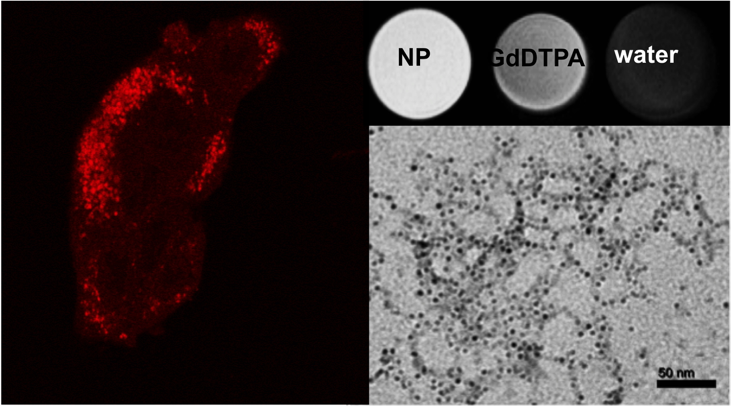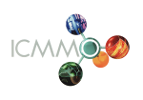Chimie Inorganique
Magnetic nanosystems
Axis 1 - Coordination nanoparticles for biomedical applications
Coordination networks such as Prussian Blue Analogs and other related cyanide-bridged polymers are highly appealing materials for the design of new nano-objects for imaging (MRI, PET…) and theranostics. The high insolubility of such compounds is a strong advantage compared to most Metal-Organic-Frameworks, as well as their green synthesis and chemical versatility. The preparation of controlled sub-10 nm nanoparticles with a core-shell architecture in water has been successfully achieved. The localization of the active ions such as MnII and GdIII at the periphery leads to exceptional longitudinal relaxivity (up to 16 mM-1s-1/MnII to 40 mM-1s-1/GdIII). A large T1-weighted contrast enhancement is observed at high field (7 T) and low concentration, reducing the amount of injected metals and providing a much larger contrast than clinical agents. Post-coating by various biocompatible polymers helps assessing the role of the polymer nature and amount for optimizing the efficiency of the nanosized contrast agents. Theranostics including photothermal therapy, radio and hadrontherapy are pursued in strong collaboration with experts of the fields and are supported within the IRS Nanotherad of the Paris Saclay University.

(left) Confocal image showing cell internalization of MnInFe nanoparticles coated with dextran-TRITC
(right, top) Bright T1 contrast enhancement obtained under 7T with MnInFe nanoparticles (NP, 0.2 mM in MnII) compared to a clinical agent (GdDTPA, 0.2 mM in GdIII) and water
(right, bottom) TEM image of MnInFe nanoparticles coated with dextran
MnII-containing coordination nanoparticles as highly efficient T1 contrast agents for Magnetic Resonance Imaging. G. Paul, Y Prado, N. Dia, E. Rivière, S. Laurent, M. Roch, L. Van der Elst, R. Muller, L. Sancey, P. Perriat, O. Tillement, T. Mallah, L. Catala (2014) Chem. Commun. 50, 6740-6742
Nanoparticles of Prussian blue analogs and related coordination polymers: from information storage to biomedical applications. L. Catala, T. Mallah (2017) Coord. Chem. Rev. 346, 32-61
Last update on 06.21.2019

